80th anniversary of Chen Zhongshin's birthday | Xing Xiaoli: Nami Nanyuan Finding Bai Deer
Author:People's Literature Publishin Time:2022.08.03
This year is the 80th anniversary of the famous contemporary Chinese writer Chen Zhongshi (1942 -2016). Chen Zhongshi wrote that the Guanzhong Plain's local society changes, the giant "White Deer Plain" is ranked among Chinese contemporary literature classics, and the "White Deer Plain" located in the suburbs of Xi'an is also known to the world. "There is a white deer on the original white deer, and there is no Chen Zhongshi in the world." On the occasion of Chen Zhongshi's 80th anniversary, he went to Bailu Plain and revisited "Chen Zhongshi of Bailuyuan and Chen Zhongshi's White Deer Plain."
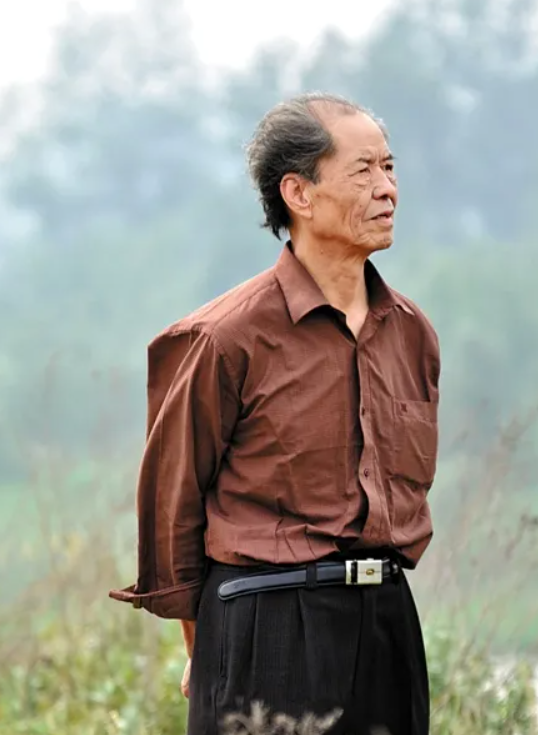
Chen Zhongshi was taken by Xing Xiaoli on the banks of his hometown in his hometown of his hometown
one
Out of Xi'an urban area to the east, encountering the Luohe River flowing north from the Qinling Mountains. To the north along the Langhe River, the Luohe River will come from things. Chen Zhongshi's novel "White Deer Plains" called Luohe River nourishing water, the Luohe River is the Runhe, and moisturizing the second water from the northeast and west three sides of the first place, namely Bailuyuan. White deer was from the past and looked at Chang'an in the west. Geology believes that this was originally formed by the wind of hundreds of millions of years. The scholar of the Qing Dynasty and the governor of Shaanxi, Bi Yuan, described the name of the White Deer Plain in "Guanzhong Shengzhi", quoted "Three Qin Ji" and said: "Zhou Ping moved eastward, and the white deer swims to the original, so it is named."
Died in the Western Zhou Dynasty, and in the early Eastern Zhou Dynasty, someone saw the white deer at the original white deer. When did the White Deer have no white deer, there was no way to check. At least from the late Qing Dynasty and even today, there are no records of the white deer.
In the summer of 1992, Chen Zhongshi had finished writing "White Deer Plain".
Spring Laihan went to recovery. When he was bald, Tao Zheng was red. Silent alone. I wanted to cry, and my nose was crying.
Is it justified? How can it be these four years and torture. Note Nanshara Find Baiyan. Lv.
After Chen Zhongshi wrote "White Deer Plain", "Note Nanshara Find Bailu", the result was "like hearing", but he did not see the white deer.
In July 2022, at a dusk, I drove to the west of Bailu Plain and turned to the north slope of Bailuhara, and went to Xijiang Village. The village is Chen Zhongshi's old residence. Chen Zhongshi always called this place as the "ancestral home old house". Now there is a sign in front of the door of the "ancestral home": Chen Zhongshi old home. I stood outside the door, the green trees were covered, and my former residence was still like that year. The door was locked.
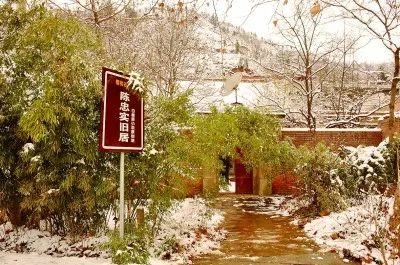
Photo by Xing Xiaoli, Chen Zhongshi, who is under the north slope of Bailu Yuan, was taken by Xing Xiaoli
This courtyard that is called "the old house of the ancestors" and today is also known as "Chen Zhongshi's Old House", and is now quietly hidden in the shade of the big tree. I know that behind the yard is the north slope of Bailuyuan. A place on the north slope is Chen Zhongshi's cemetery. A small place. The cemetery is simple, with a pine tree, a black tombstone, which says "Chen Zhongshi's tomb".
In the spring of 1986, Chen Zhong lived in the old house of Xiangjiang Village. At the stage of preparing for the creation of "White Deer Plain", he asked the folks to help and built a new house on the ground of the old house of Zuju. This new house or a new courtyard, I have been here many times, and I do n’t know how to go in: the courtyard leaning on the north slope of Bai Luyuan, sitting in the south to the north, facing the ribbon of the north. The courtyard pattern is: the gate, the front courtyard, three rooms in the front room, the middle courtyard, the small tree flowers and grass, the back room, the back courtyard, the back of the small courtyard is the north slope of Bailuyuan. , Summer can be cool inside. On the afternoon of July 23, 2001, in this cave, Chen Zhongshi and Zhao An, chairman of Xi'an Guangzhong Film and Television Co., Ltd., and Zhao Jun, the general manager, signed and signed a contract for "White Deer Plain" TV series.
The new house in his hometown was completed. Chen Zhongshi made the one in the right side of the three back room with about ten square meters and made his study. This study was where Chen Zhongshi wrote "White Deer Plain" at the end of 1992 and before returning to the city, he was studying and creating, which was stored in the books and magazines he purchased and collected for decades. There are three two -door bookcases in this study. Two of them are slightly wider. The style is the same. On the top is the pattern glass sliding door, which is divided into three floors and the wooden door is lower. Pulling the hand door, which is divided into four floors, and below is a wooden sliding door. At that time, I took Chen Zhongshi's collection of books here. His collection of books is roughly classified, such as Chinese literature and foreign literature, but in general, there is no meticulous classification and storage, and it looks scattered. Judging from the collection of books and magazines, there are many books and less publications. The books are mainly literary books, and most of the literary books are foreign literary works.
In the past two years, Li Jianjun and other friends from the Institute of Literature of the Chinese Academy of Social Sciences also came to see this study, and the old appearance was still. A few days ago, he met Mr. Wang Pengcheng, who was taught by Northwestern University to teach Chinese modern and contemporary literature. He said that in recent years, he once came to see the study, and accidentally saw some writers and scholars in the study desk drawer. It seems that Chen Zhongshi's former residence, especially his study, is still preserved.
During the construction of the new house, Chen Zhongshi also made a painting on the stone walls on both sides of the front house of the front house. On the other side, there were mountains and sea swallows on the other side. This is the first time Chen Zhongshi's life is the only painting.
This is Chen Zhong's former residence. It was a typical style of the small courtyard of the Guanzhong Rural House in Shaanxi in the 1980s. Of course, it also has a strong cultural atmosphere, which belongs to the cultural atmosphere of Chen Zhongshi, a writer who has lived at the grassroots level of the countryside for a long time.
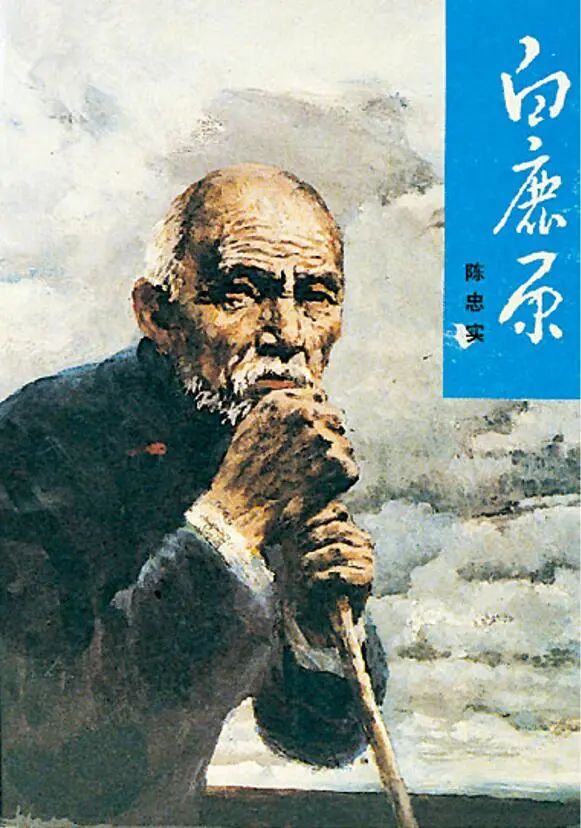
The first version of "White Deer Plain"
two
According to my observation and understanding, Chen Zhongshi's outlook on life is generally a practical category. He is less romantic and does not like to do nothing. For example, he is not keen on tourism. However, he went to the former residence or hometown of three writers. The former residence of Lu Xun in Shaoxing, the former residence of Mao Dun, Wuzhen, and the cemetery of Shen Congwen, a Phoenix in the western Hunan. Go, all for his favorite writer.
From the end of May to early June 2000, Chen Zhongshi was invited to Jinhua City, Zhejiang Province to participate in the fifth annual meeting of the Chinese Fiction Society. After the meeting, he and Li Jianjun went to Shaoxing for a special trip. In Shaoxing, he visited the former residence of Lu Xun and the Lu Xun Museum. He said: "Everyone who is literary should come here to return to the ancestors. We are here to return to the ancestors." He was puzzled about some ugly or slandering Lu Xun's remarks, "These people said," These people I do n’t want to think about it. I denied Lu Xun. What can be left in the history of modern literature? The problem is that until now, no one has reached the height of Lu Xun. It can be seen so deeply that in the understanding of Lu Xun, Chen Zhongshi attaches importance to Lu Xun's anatomy of national illness and problems.
In late October 2002, Chen Zhongshi visited the former residence of Wuzhen and Mao Dun in Wuzhen, and then wrote the prose "In Wuzhen". In this essay, he said affectionately: "The ancient towns or villages of more than a thousand years, no matter in the south or north of China, will not actually cause too much surprise. It can be traced back to the year before the AD, and it is also true of the south. The history of this nation has a long history. I rushed here from the distant Guanzhong. Obviously, it is not purely sightseeing a style of Jiangnan ancient town, but because of the development of modern Chinese literature in Chinese literature, the development of modern literature in China Mr. Mao Dun, one of the founders, was born and grew here. This town is called Wuzhen. Wuzhen's Mao Dun and Mao Dun's Wuzhen have lingered in my emotional world, decades. "(Chen Zhongshi:" In Wuzhen ") Chen Zhongshi recalled the scene when he was in high school:" Tour on the Dongxi River, and my thoughts float in the thoughts and his works. The wide river embankment on the Luohe River, even the people riding a bicycle here are hard to meet, and I can read it with confidence. I read Mao Dun in that period, "Zi Ye", "Eclipse", "Corrosion", "" "Multi -horned relationship" and "Lin Family Shop" and other short -term novels. At that time, they were in the "three -year difficulties" period. While the education department canceled physical education in middle school, it also canceled the homework of evening self -study and various disciplines. The purpose was very simple. To preserve the calories that are limited due to food deficiency, it is to say that it is the best opportunity for reading novels. I can’t remember the cause of the cause and the origin. Almost all read. Lying in a collective dormitory, read it under the shade of the Luohe River, go home on Saturday and read along the river embankment all the way. As a middle school student who prefers literature, there is no attempt to study and evaluate. It feels like a long -lasting respect. After more than forty years, I finally came to the ancient town of the giant master. This town is called Wuzhen. "
"White Deer Plain" manuscript
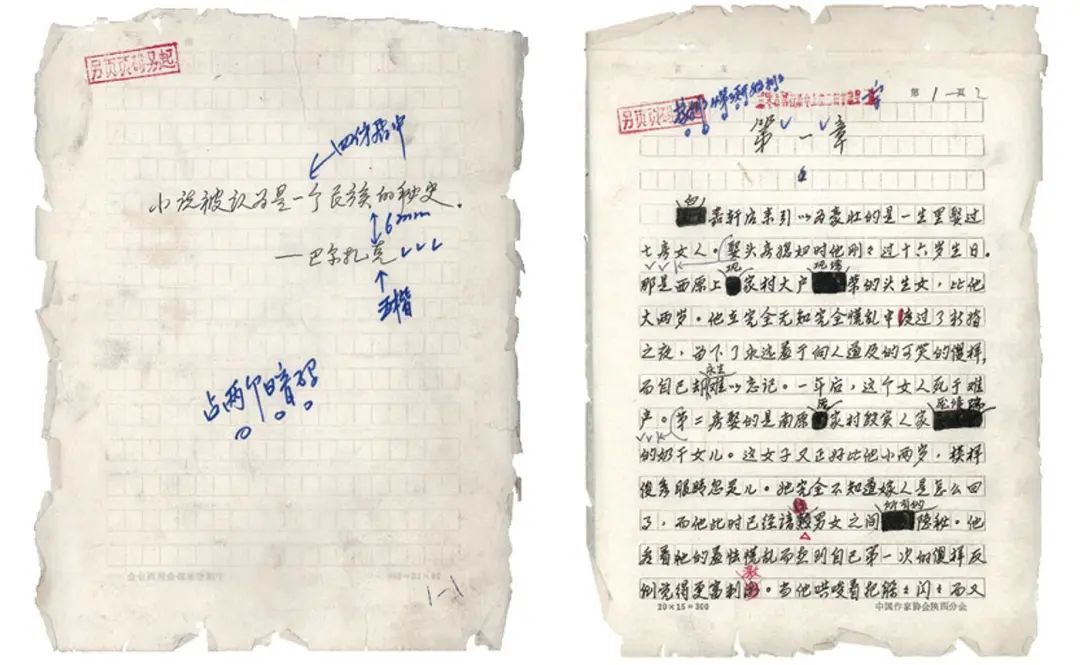
Chen Zhongshi wrote what he saw and felt in the former residence of Mao Dun, and wrote very well, indicating that he observed it slightly and thought a lot. He talked about the influence of Mao Dun's novels on him, and specifically mentioned that he was "Spring Silkworm" in the textbook of middle school in the textbook. It is not what Mao Dun experienced what Mao Dun was experienced in his own deep house. The result of the increasingly withered old Tongbao's cottage courtyard ". Therefore, the feeling of "learning" Spring Silkworm "did not be unfamiliar because Lao Tongbao was a southern silk farmer." Instead, it felt that "it is no different from the end of the Guanzhong's Guanzhong, cotton farmers in Guanzhong," Essence Chen Zhongshi talked, "This feeling has been affecting me until now." Therefore, he later "paid great attention to the small cultural color of the region." He realized that "a Confucianism" has widely affected the same nation in the same historical process. Therefore, it is necessary Essence
From the end of May to early June 2005, Chen Zhongshi participated in the re -capture long march organized by the Chinese Writers Association. He serves as the head of the first regiment of the Chinese Writers Caifeng Group. In the end of the schedule, in order to remember Shen Congwen, Chen Zhongshi took the first regiment to pass through the Phoenix of the ancient city of Xiangxi. At that time, Shen Congwen walked out of the mountain along a puppet water from his hometown of Phoenix. The members of the group took the next journey along the Minjiang River, abandoned the boat ashore, and went up to listen to the foothills of the Tao Mountain, and went to Shen Congwen Cemetery. There is no graveyard in the cemetery, only a natural colorful stone tombstone is erected, and Shen Congwen's handwriting is engraved on the front: "Thinking about me, you can understand me; you can think about people." The book: "No discouragement, the stars fight the text; it is also kind and given, the red is the person." This is the generalization and evaluation of Shen Congwen's text. In the shade not far from the tombstone, there is a stone monument, which is engraved with the inscription of the painter Huang Yongyu as his cousin Shen Congwen: "A soldier is either a battle of the battlefield or returning to his hometown." In front of Shen Congwen's tomb, Chen Zhong put on it to put on it on the tomb of Shen Congwen. Glasses, took out the notebook, looked seriously, and remembered it seriously. No matter from the characteristics of the hometown or the style of the work, Chen Zhongshi from Guanzhong, Shaanxi and Shen Congwen, who came out of Xiangxi Water Village, are all similar. However, Chen Zhongshi admires Shen Congwen's personality. With rich feelings and imagination. Chen Zhongshi is a contemporary writer who mainly describes the country. Lu Xun, Mao Dun, Shen Congwen, the three -person literary style is different or even different, but the three of them have written the country. Although the focus of Mao Dun's creation is not local, his "rural trilogy" including "Spring Silkworm" includes "Spring Silkworm" It can be seen as a local novel in a broad sense, and Lu Xun and Shen Congwen, an important aspect of their literary creation is local novels. Therefore, in a certain sense, Lu Xun, Mao Dun, and Shen Congwen are everyone and front -wheel drive of modern local literature in China. In this sense, the three of them should also be the "roots" and "source" of the literature created by Chen Zhongshi's local creation, and it is an important reference writer for Chen Zhongshi's local creation.
Chen Zhongshi's visit to Lu Xun, Mao Dun and Shen Cong Wen's hometown, in the sense of literature, has the meaning of worship. This is the writer's worship and respect for the writer, and it is also the writer's learning and inheritance of the writer. Due to respect and inheritance, the value and intentions of a certain literature will be permanently circulated.
Old photos of Shaanxi writers, from the left: sub -pages, white strokes, Jia Pingwa, Lu Yao, Jingfu, Chen Zhongshi
Three

Traditional China is a local society, and Sociologist Fei Xiaotong's "Local China" has made a deep discussion of Chinese local society. Chen Zhongshi's "White Deer Plain", now it seems that it is undoubtedly a classic novel that describes Chinese local society and history.
In 2019, "White Deer Plain" was selected as "New China 70 -year -old 70 -year -old novel collection"
If Lu Xun, Mao Dun, and Shen Congwen's local world is a local society in the south, then the local world written by Chen Zhongshi is a northern local society. Lu Xun's scholar, half of the city and half -village in Lu Xun, Lu Town and closed Weizhuang in the half -town and half -village. Because of the curved water channel and black canopy ship, it has the characteristics of Jiangnan. The "Spring Silkworm" in Mao Dun is also the representative image of Jiangnan. Shen Congwen's "Xiangxi World" and "Border City", the clear stream and ferry, naturally south. The "White Deer Plain" world in Chen Zhongshi is a thick and flat and vast loessing original, and there are gaps, but it is a transition between plains and plains, not the bottomless gully in the mountains and mountains. There are also nourishing water and Runhe, as well as the Weihe River in the "White Deer" world, but these water and river have not been used for sailing for a long time. The Weihe River also has a ferry boat. People cross the river. Chapter 24 of "White Deer Plains", "On the way to the ancient city of Runhe, a ferry without a ferry is formed, which has created a kind of professional crossing the river." Bai Xiaowen hunted, escaped, went to the Runhe ferry, and dressed as a back river who crossed the river. The transportation on the original Bailu originally written in "White Deer Plain", such as from Zishui County to Xi'an in the provincial capital, public transportation is a wooden wheel car of Niu La. Only a wealthy big household such as Bai Jiaxuan and Lu Zilin. Pulling wooden wheels. All this is fully reflected in the world of "White Deer Plain". This local world of Guanzhong Plain is different from the south of the water village. It is north and the north of the yellow land.
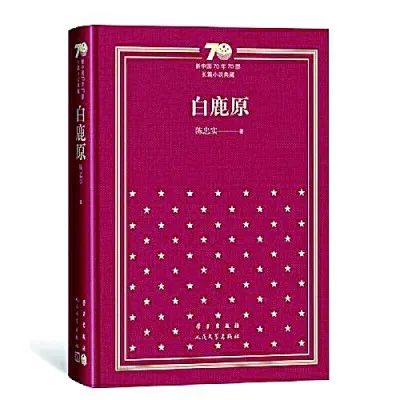
One side of the water and water raises one person, and one side of the soil and water naturally has different cultures. There is also a major difference between the "White Deer" world and other local society, that is, it was in the "Gyeonggi" place in ancient times. Xi'an was the capital of the 13 dynasties of the Zhou, Qin, Han and Tang dynasties. Chen Zhongshi said that his hometown, "The area of the Qiaoqiao area occupying most of Xianning County in history", "Xianning was the place of Gyeonggi in the Han and Tang dynasties. Create a generation of loyalty and etiquette around the palace wall, the so -called Jingmen face ". Therefore, the ancient Xianning area of the Qiaoqiao area also includes the current part of the white deer. The water was excreted on the land outside the palace wall, and this land accepted both civilization and accommodation "(Chen Zhongshi:" I said that the preface to the "Integration of Folk Literature in the Bridge District"). Instead of expressing Chen Zhongshi's image, that is, this land traditional culture has accumulated deeply. Therefore, the "White Deer Plain" world in Chen Zhongshi is both a northern natural world, but also a rural literary world with a deep accumulation of traditional culture. From the perspective of local literature, Chen Zhongshi's "White Deer Plain" has its own world. Lu Xun, Mao Dun, Shen Congwen, etc., their origin or declined family, or a well -off family, they left their hometown early and became students or foreign students. They lived in large cities such as Beijing and Shanghai. There are memories or nostalgia. Chen Zhongshi was born in an authentic peasant family. He was born in Sri Lanka, grew up in Sri Lanka, relying on land to eat. Although he also studied in high school, he returned to his hometown as a private teacher after graduation. When he was a professional writer, he always lived in the countryside. It was not until the age of 50 that "White Deer Plain" officially lived in the city. Therefore, from the perspective of being familiar with rural society and understanding farmers, Chen Zhongshi has the thickness and depth of experience of his life beyond ordinary people. Judging from the characteristics of their works, Lu Xun is the front -wheel drive and representative of the May 4th New Culture and New Thought. His local novels, with a critical vision of the old culture. Like a doctor, he holds anatomy knife In a sense, this is the "removing charm" of traditional rural poetry -like local culture. Mao Dun, his literary role is generally a city in the city. He stands from the perspective of the left -wing thought and cultural perspective, revealing the decline of capitalism. Shen Congwen walked out of his hometown of Xiangxi, and a "rural person" ran in cities such as Beijing (Peiping), Shanghai, Wuhan, Nanjing, Qingdao, Kunming and other cities. Like "Prophet", "Lights on the day", seeing the unbearableness of cities, high society, and modernity, therefore, with the tendency of "anti -modernity". He looked back at the world of western Hunan West, which has never been impacted by modernity, and wrote his local literary works that belonged to him. His local literature has the characteristics of "return". Later, Zhao Shuli and Sun Li also wrote localities. Their works even had the rich soil atmosphere of "yam eggs" and the "Lotus" Qingfen's lotus fragrance and water. Later, Liu Qing and Hao Ran, the works of the rural areas they wrote, the soil was still strong, and the rural characters and life scenes were also rich and vivid, but their purpose was to write "new society" and "new people". In comparison, Chen Zhongshi's long -term "White Deer Plain" cannot be said to live later, but in terms of writing local society, due to the experience of learning and borrowing from literary predecessors, in various paths opened by the former sages, "find your own sentence" , Finally become your own scenery.
The new version and manuscript of "White Deer Plain" from the People's Literature Publishing House (part)
The local society in Chen Zhongshi has become the true of the local society, especially the northern Guanzhong local society. This is a traditional ultra -stable in the traditional super stability composed of the landlord, the parents and the patriarch Bai Jiaxuan, the wives and the mother, the mother of the gods, the landlord Lu Zilin, the Long Gonglu San, the poetry and ceremony inheritance, the teaching of the Confucianism, and the faithfulness of Confucianism. Local society structure. However, the storm of the times has come, and the "super stability" structure of thousands of years has fluttered. From this point of view, "White Deer Plain" is both a panoramic view of a local society, but also a history of changes in local structure and traditional society. In the form of literature, "White Deer Plain" records and restores the various historical forms of mature local society formed by my country for thousands of years. memory.
For thousands of years, the country has been the root of most Chinese people's lives, and the local society has also been the homeland of Chinese people. In the wave of modernization and urbanization, the traditional local society gradually disappeared and reshaped. Li Bai has a poem: "In this night song, he smells the willow, who can't afford the feelings of the garden." Du Fu's poem said: "Cong Ju opened his tears in the sun, and the lone boat was the heart of the old garden." Long, double -sleeved dragon bells do not work. "Literature, especially novels, because of the function of artistic reproduction, people who have the" hometown heart "and" hometown situation "must always seek historical mottled relics in reality, and they are also willing to be in the novel in the novel. Find the path to the "hometown" and relive the "hometown situation". Just as you want to understand the life of the aristocratic family in the era of feudalism or the emperor's era, you need to read the "Dream of Red Mansions". If you want to seek the texture of the traditional local social life, you must read "White Deer Plain".
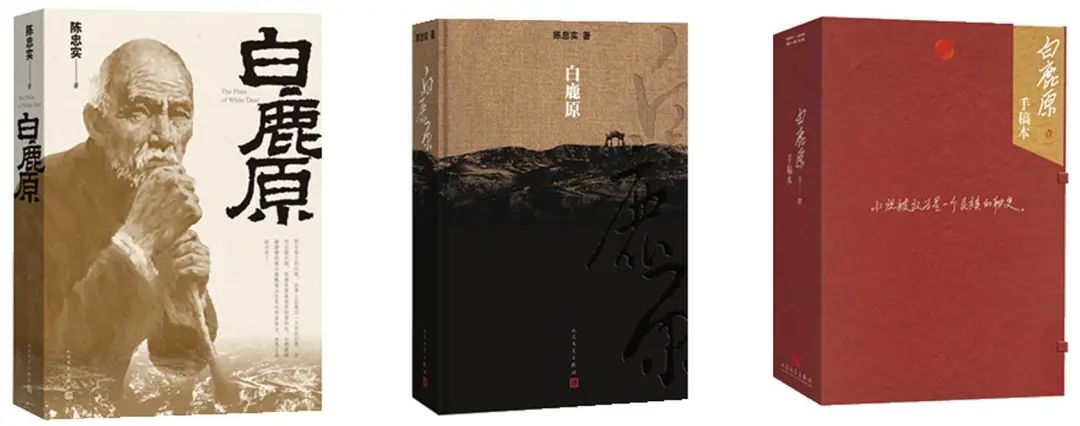
Unrestrained
"Floating clouds travel, and the sunset is the same." Passionate people who are keen to find roots and those who like historical traces, they always want to find a place that can entrust "meaning" and "love" to settle the nostalgia. A few years after the novel "White Deer Plain" was published, because of the huge influence of this book, Bailu originally changed its original name to the original name of Zhou Ping Wang. Zhaiyuan -"White Deer Plain" came out, and changed back to the original name and set up a monument on the original top. For more than ten years after the release of "White Deer Plains", Bailu Cang Scenic Area, a prototype of Bailu Cang in "White Deer Plain", was built in the north of Bailuyuan, trying to reproduce the old scenery on Bailu Plain with real views. The number of tourists is also six or seven million. The Bailuyuan Film and Television City was also built at the same time. It is located in the Pharmaceutical Pour of the south of Bailuyuan. The scale is huge and it is a provincial cultural tourism project. It is based on the local society in "White Deer Plain" as the basic construction concept. There are Zishui County. There are various districts with folk characteristics, including Bailu Village, the village, the archway (archway), the ancestral hall, the stage, the Baijiaxuan House House and Luzilin House House and village gate at the entrance of the village. The facilities and residences in Bailu Village are mostly relocated by the actual scenes of the film "White Deer Plain" film. These realities are quite a part of the historical real objects in the eastern part of Guanzhong Plain. There is a feeling of returning to the old times. The park also carried out a number of characters and stories in "White Deer Plain" in the form of real -life performances, such as "Two Tigers" and "Black Waid Performance". It is understood that Bailuyuan Film and Television City tourists in 2017 were 3.46 million, and 1.08 million in 2021. Earlier, in 2005, some scholars in Shaanxi and Chen Zhongshi set up Bailu Academy together. Chen Zhongshi was elected as a lifelong dean. When Chen Zhongshi was founded in the academy, "White Deer returned to White Deer." According to experts from experts, there are more than 7,500 colleges from Song to Qing, and there are more than 1,000 traditional colleges that have been reserved today. Since the 1980s, nearly 2,000 newly built modern colleges. As the White Deer Academy from the novel "White Deer Plain" to real life, inherit innovation, gather books, and teach books, academic research, teachers and students' famous collection, cultural exchanges from all walks of life. When the Chinese Academy of Academy was established, it was elected as the vice president unit. In 2006, Bailu Academy cooperated with Xi'an Siyuan College to build Chen Zhongshi Literature Museum to show Chen Zhongshi's literary road and creative results. Member units of the committee, there are endless streams of visitors and researchers from home and abroad.
At this dusk, I wandered alone in front of Chen Zhongshi's former residence, thinking of Chen Zhongshi's words: "Wuzhen's Mao Dun and Mao Dun's Wuzhen", "Ling in my emotional world for decades." I think, at some time, maybe, no, there will be another writer or some writers, as well as tourists from different places, come to Xi'an, come to Qiaoqiao, come to Xiangjiang Village, see Chen Zhongshi's former residence, say "Chen Zhongshi and Chen Zhongshi's Qiaqiao of the Qiaoqiao" once lingered in his emotional world for many years, and then went to Bailuyuan and watched "Chen Zhongshi of Bailuyuan and Chen Zhongshi's Bailu Plain."
On the occasion of Chen Zhongshi's 80th anniversary, Chen Zhongshi's hometown of Xi'an City held a meeting related to Chen Zhongshi. At the meeting, some people said that some white deer found a few white deer somewhere in the forest land.
It is said that it is still a wild white deer.
In 2792 after Zhou Ping Wang Dong moved to Luoyi (770 BC), Bailu Plains also traveled to the original.
Author | Xing Xiaoli
Executive Deputy Dean of Shaanxi Bailu College, author of "Chen Zhongshi Biography", "Chen Zhongshi Painting Biography" and so on
Article | "Guangming Daily" (13th version of July 29, 2022)
- END -
Four abnormal situations of white tea, one occurs for one, indicating that the tea is broken

丨 This article is original by Xiao Chen tea丨 First of the People's No.: Xiao Che...
Shaanxi Shizheng site Huangcheng Terrace found large -scale human face stone carvings
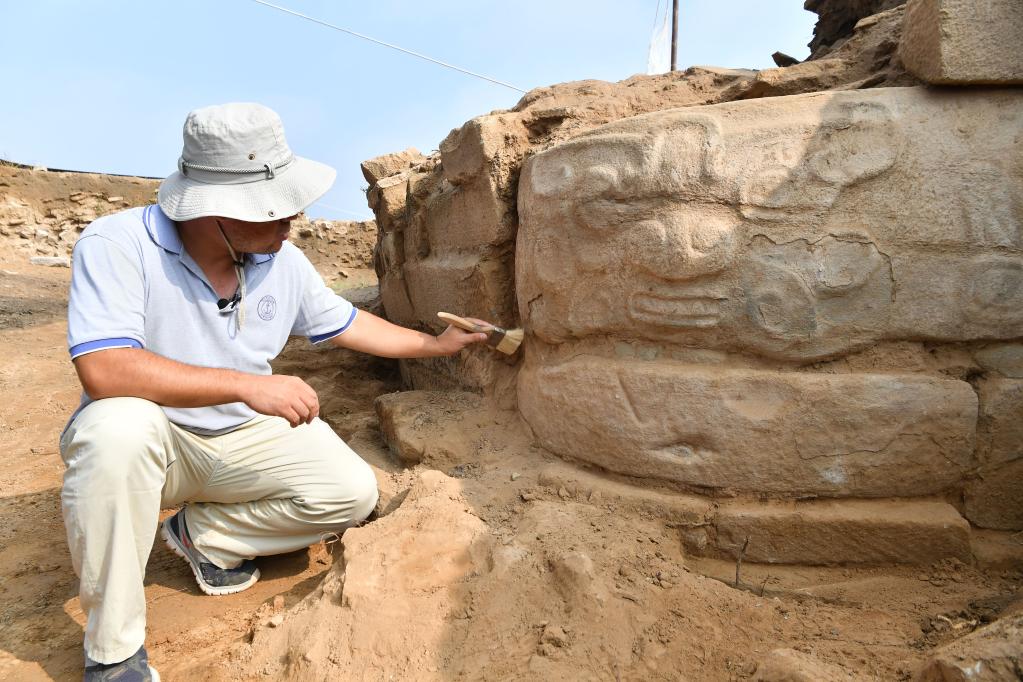
There are new archaeological discoveries in the Shiqi site in Shaanxi. Archaeologi...